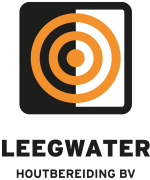Thermally modified Fraké cladding is a high-quality choice for architects, developers and contractors who aim for sustainable wood application with a natural look. Leegwater Houtbereiding treats this material on a project basis and provides it in-house with specialist treatments such as fire retardancy and coating, tailored to the design and application.
Characteristics of thermally modified Fraké
Fraké, also known as Limba, originates from West Africa and is thermally modified to improve its natural durability, shape stability and dimensional stability. During this process, the wood is heated under controlled conditions without chemical additives. The change in cell structure gives the wood a higher natural durability and makes it suitable for outdoor use.
Key features and advantages are:
- Improved form stability
- Increased natural durability (class 1-2)
- Natural silver-grey ageing and dimensional stability
- Relatively lower weight, making it easier to handle
- Characteristic appearance due to varying grain and structure
- Higher heat coefficient
- No chemical additives
Thermally modified Fraké can be treated at Leegwater:
- Fire retardant treatment based on Flame delay® PT or Flame delay® FX Pro
- Both opaque and semi-transparent paint systems
- Pre-greying based on Sansin Woodsealer®
These properties make thermally modified Fraké particularly suitable for facade applications in a variety of environments.
Projects with thermally modified Fraké cladding
Leegwater applies thermally modified cladding in various projects where aesthetics, durability and reliability come together. Some realised applications:
Republica – Amsterdam
This multifunctional complex in Amsterdam North uses thermally modified Fraké as cladding. The wood is factory-treated and contributes to the natural look of the building.
View project ›
Het Hooghout – Amsterdam
In this residential building in Amsterdam-Zuid, thermally modified Fraké that has been fire-retardant treated was chosen. The facade panels have been carefully processed and form an integral part of the architectural expression.
View project ›
Nautilus – Egmond aan Zee
For this coastal project, thermally modified Fraké was used in the cladding. The natural greying matches the environment, while the thermal modification provides protection against seaside weathering.
View project ›
Care hotel and hospice – Egmond aan Zee
Thermally modified Fraké was chosen in this care facility because of its soothing appearance. Leegwater took care of the wood preservation and finishing in collaboration with project partners.
View project ›
Processing and installation
Thermally modified Fraké can be easily sawn, screwed and nailed. For fire-retardant treated material, always use stainless steel A4 fasteners due to susceptibility to corrosion. Thermally modified wood produces very fine sawdust during sawing. Always wear a dust mask.
Integral cooperation and delivery reliability
Leegwater Houtbereiding provides full preservation and finishing of thermally modified Fraké in-house. In cooperation with sister companies EcoWood Painting and Leegwater Paints & Stains a conclusive solution is offered for high-quality facade cladding. Thanks to this integrated approach, quality, delivery reliability and technical control are fully guaranteed.
Would you like more information on the application of thermally modified Fraké cladding in your project? Then contact one of our specialists via the contactpage of Leegwater Houtbereiding. We are happy to think things through with you on the basis of the technical requirements, desired appearance and architectural preconditions.





